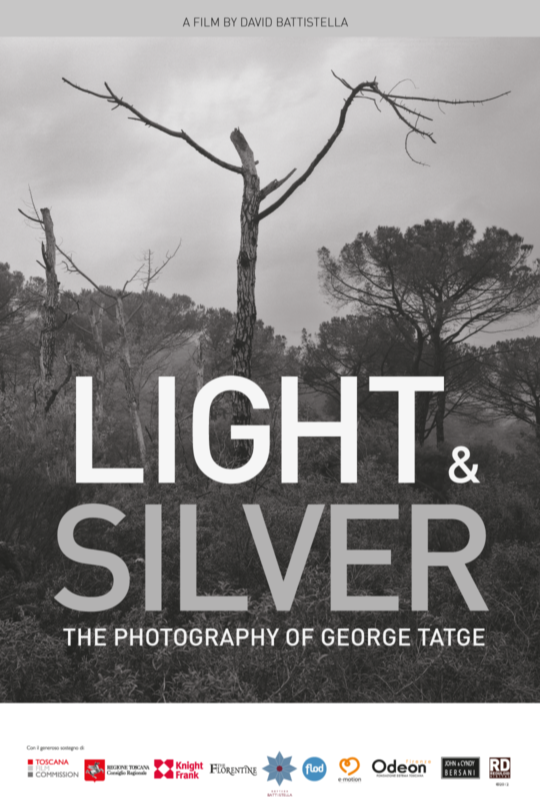
The film was amazing—beautiful cinematography and a story within a story very thoughtfully put together.Thanks so much for the introduction !!!
I was so impressed that the primary restorers were women – that it was a story about women on every level, and as such,
mysterious and human
and of course, nuanced.
It’s beautiful, and moving, and an ode to something incredible in Florence’s past. It’s both delicate and strong in its presentation – bravissimo.
We loved it. I was so impressed that the primary restorers were women — that it was a story about women on every level, and as such, mysterious and human and of course, nuanced. i am thrilled that we had the opportunity to see it.
beautiful cinematography and a story within a story…
very thoughtfully put together
We loved being there..
The movie was stunning! The restoration of the painting very interesting, and the history of all those babies, their lives and the really extraordinary collection of tales of each child.
The film was amazing—beautiful cinematography and a story within a story very thoughtfully put together.Thanks so much for the introduction !!!
We restore things to learn, and what I believe The Innocents of Florence teaches us is that there are no excuses. The Institute’s beginnings make up what we would now call a grassroots social movement.
LIGHT & SILVER
The Photographic Life of George Tatge
DOCUMENTARY 26 minutes
George Tatge is a fine art photographer. His camera is made of wood. For him, creating images requires chemistry, paper, vegetable based film stocks, great care and patience. His camera is capable of loading only one frame at a time and when he photographs a subject it usually means making one image – a single frame.
His process is profound and with the proliferation of digital photography the ritual of his art form is a fascinating study of how we once did things. It tells a story of the absolute magic and alchemy it took to create photographs with analog film. George Tatge articulates his feelings about working with traditional film.
“We live in a digital photographic age but not long ago producing a photograph was a detailed chemical process. I appreciate the ritualistic aspects and the physicality of photographing with a view camera. The slowness of the procedure, the adjustments of the optics and the film plane, the concentrated and meditative quality of it all. And seeing an image gradually appear almost magically in a liquid solution has always excited me. There is a lot of mystery in this method and I still prefer to make photographs in this way.”
Digital Technologies have opened up new possibilities for cinema. Filmmaker Davide Battistella uses the same camera as many blockbuster Hollywood features have, to capture an intimate personal portrait of an artist. George Tatge’s photographic and artistic process has been elegantly and patiently captured on the most sophisticated digital equipment available.
“I had this incredible digital tool in my hands and I wanted to create something that would remind us of what came before digital. I love film and the mood it helps create in photography and film. When I did my first tests I could see that this camera carries the same aesthetic as film, but in a compact digital camera body. Filming George at work capturing these massive negatives, with a camera made of wood, was a way for me to use technology of the future to remember the past.”
The film also features music by George’s son William Tatge, a jazz pianist and composer who lives in Brooklyn, NY. The soundtrack is the perfect accompaniment to the style and texture of George’s images. In the film George tells a story of how his young son sees “color” in a black and white print. Battistella says that the soundtrack, which now informs the film was a happy accident.
“I only found out after we finished filming that William is an accomplished musician. George handed me the CD and I had a listen. Somehow I could really feel George’s work in William’s music. I could hear, at the same time, the way the work of unique artists from different disciplines really complimented one another. They also happen to be father and son.”
CAST
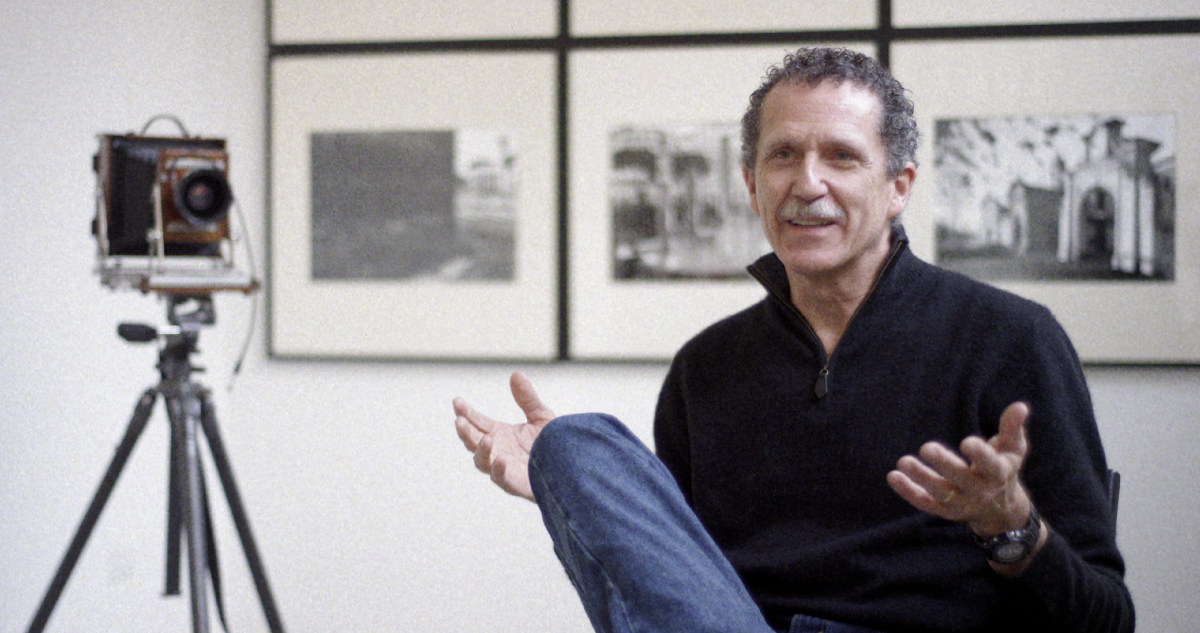
GEORGE TATGE
PHOTOGRAPHER
George Tatge was born in Istanbul in 1951 of an Italian mother and American father. He lived in Europe and in the Middle East most of his youth and studied English Literature at Beloit College in Wisconsin, where he also began photographing under the guidance of the Hungarian photographer Michael Simon.
In 1973 he moved to Italy where he worked in Rome as a journalist and then in Todi, Umbria, where he lived for 12 years working as a freelance photographer and writer (reviews for Art Forum). His first exhibition in Italy was in 1973 at the Diaframma Gallery in Milan. His first book, Perugia terra vecchia terra nuova, came out in 1984.
From 1986 to 2003 he was Director of Photography at the Alinari Archives in Florence.
ARTICLES
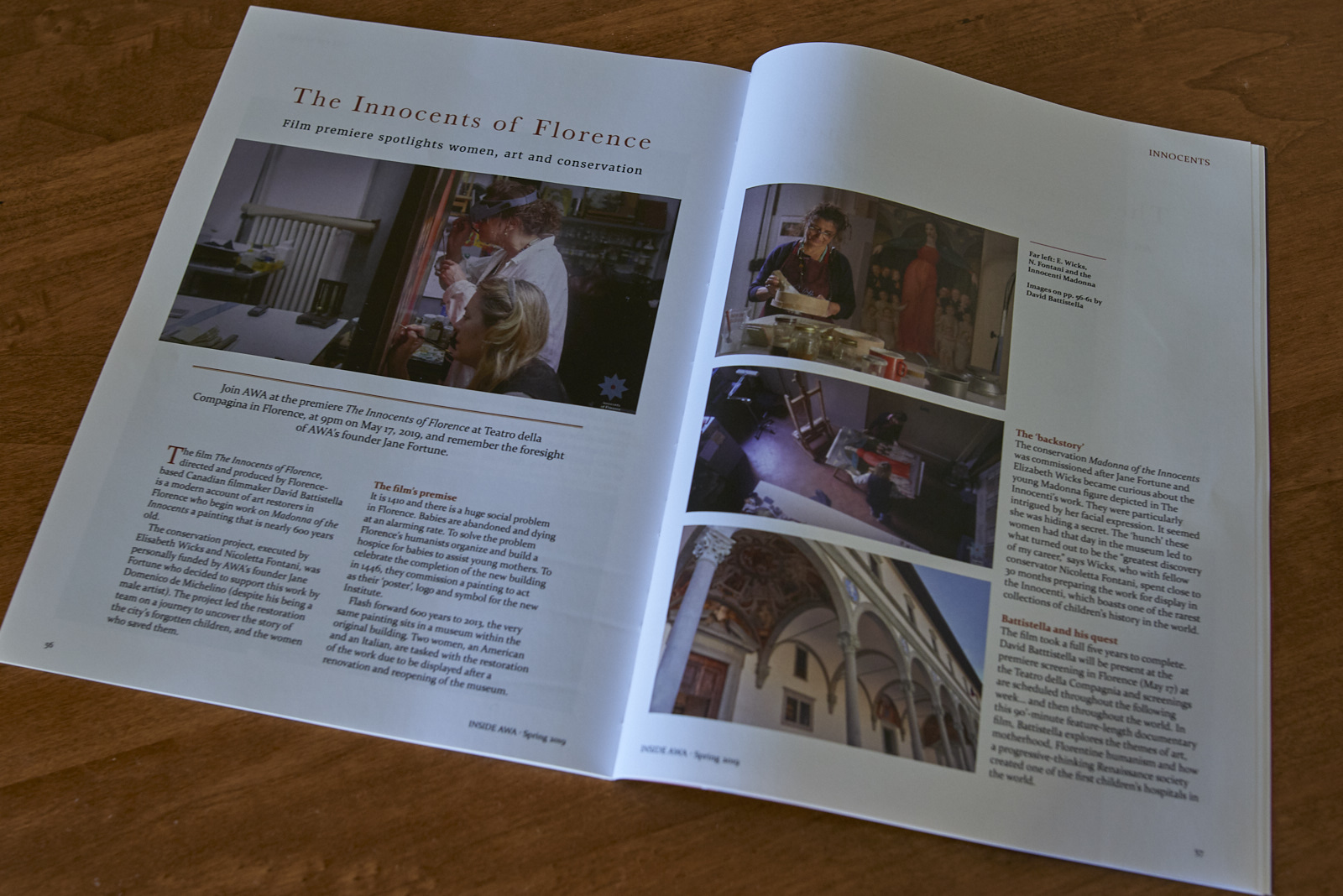
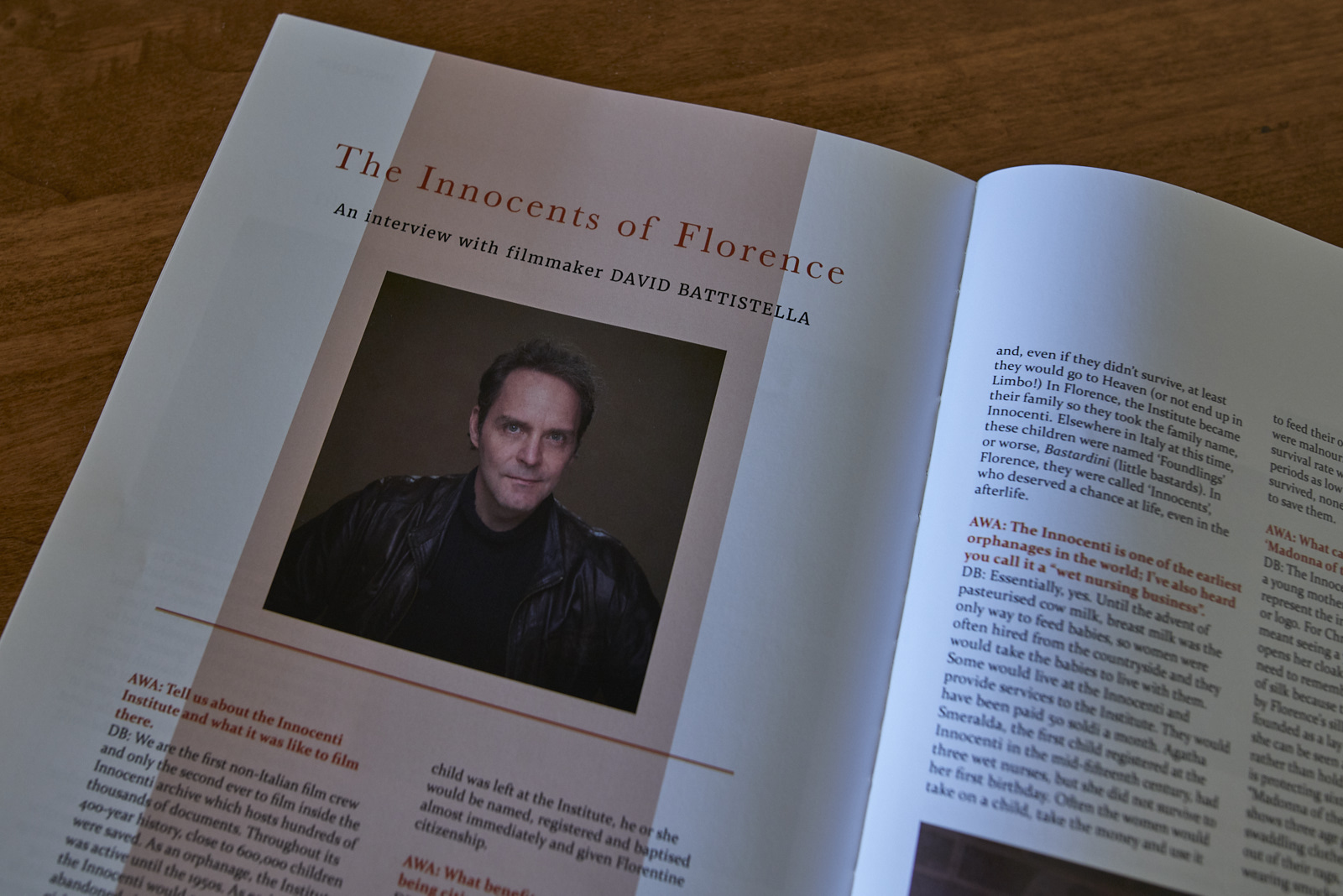
It’s 1410 and there is a huge social problem in Florence. Babies are abandoned and dying at an alarming rate. To solve the problem Florentine Humanists organize and build a hospice for newborns and to assist young mothers. To celebrate the completion of the new building in 1446, they commission a painting to act as their poster, logo and symbol for the new Institute. Flash forward 600 years to 2013, the very same painting sits in a museum within the original building. Two women, an American and an Italian, are tasked with the restoration of the work due to be displayed after the renovation and reopening of the museum.
The conservation of ‘Madonna of the Innocents’ was commissioned after Jane Fortune and Elizabeth Wicks became curious about the young Madonna figure depicted in the work at Florence’s Museum of the Innocents. They were particularly intrigued by her facial expression. It seemed she was hiding a secret. The ‘hunch’ these women had that day in the museum led to what turned out to be the “greatest discovery of my career,” says Wicks, who, with fellow conservator Nicoletta Fontani, spent close to 30 months preparing the work for display in the Innocenti, which boasts one of the rarest collections of children’s history in the world.
The film took a full five years to complete. David Battistella will be present at the premiere screening in Florence (May 17) at the Teatro della Compagnia and screenings are scheduled throughout the following week and in other cinemas this year. In this 90’ minute feature-length documentary film, Battistella explores the themes of art, motherhood, Florentine humanism and how a progressive-thinking Renaissance society created one of the first Children’s hospitals in the world. He tells this story through the restoration of a painting that was created as the banner for the Innocenti Institute in 1446.
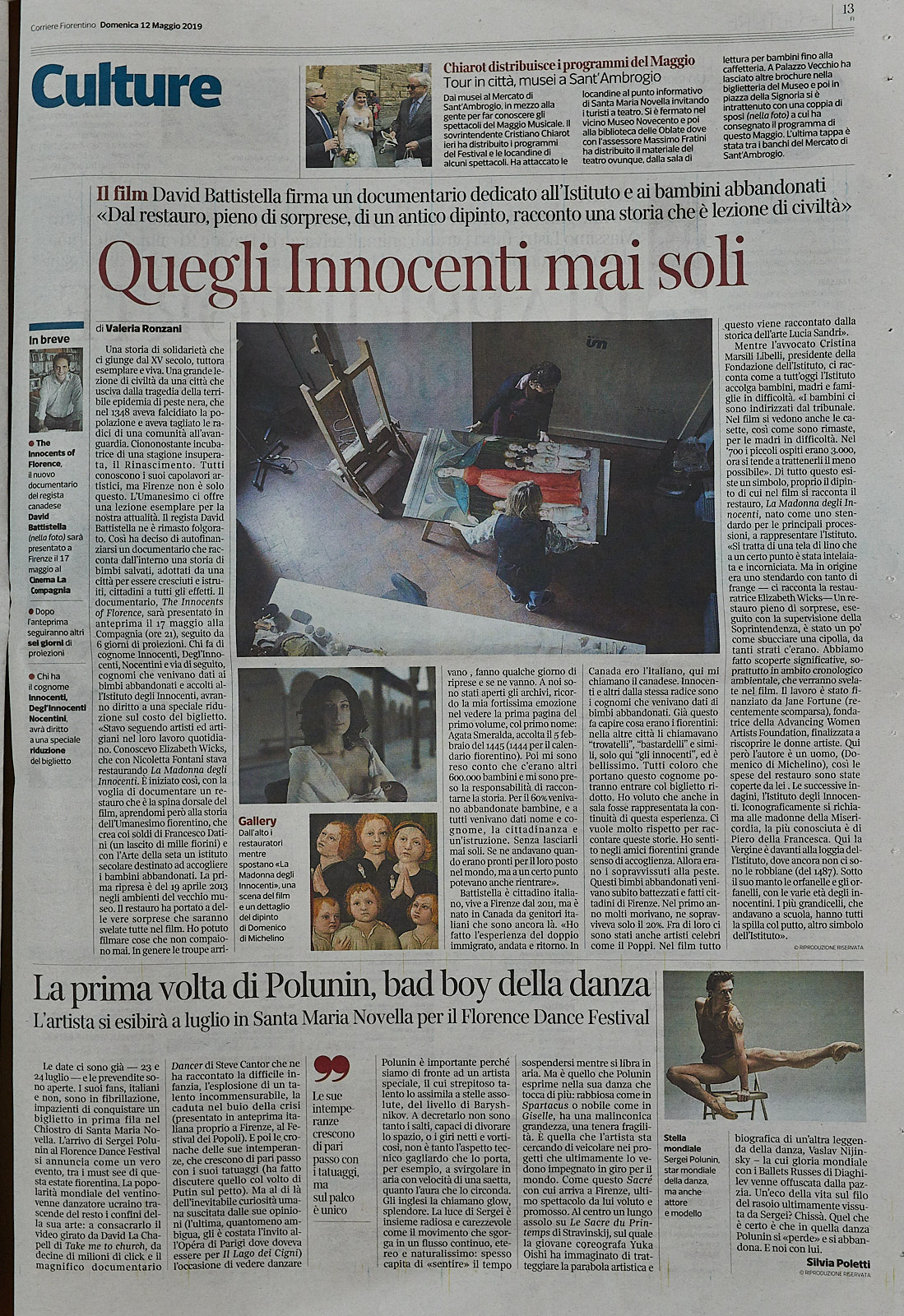

BACK TO HOME PAGE